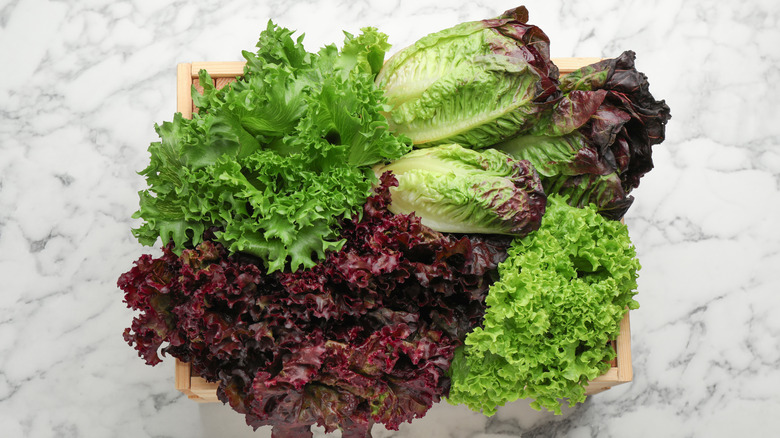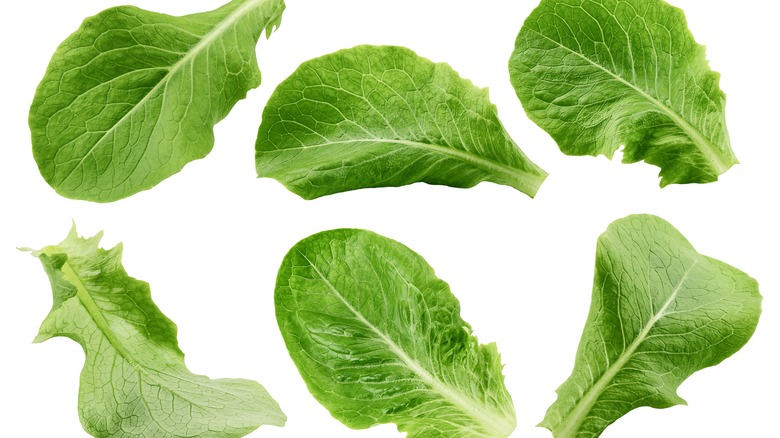The Best Types Of Lettuce To Experiment Cooking With
Lettuce is an ingredient we often take for granted. Sure, we'll use it to add freshness to our tacos or put it in our salads to serve as a ranch dressing delivery vehicle, but rarely do we allow it to be the star of the show. Some people go a step further and completely despise the vegetable. In a very specific Reddit page dedicated exclusively to lettuce hatred, for instance, a user asked the question, "Is there a way to just delete lettuce from existence?"
If you view this group of leafy greens as nothing more than a filler vegetable, it might be time to give it another chance. Instead of limiting it to raw preparations, a char, fry, or sear will help lettuce truly come to life. For example, the next time you fire up the grill, grab some hearts of romaine or a head of radicchio. With a brush of olive oil and a few minutes on the grill, the vegetable will develop a smoky, almost caramelized exterior that will complement the fresh, crispy interior.
Looking to introduce a new green to your stir fry? Romaine, and believe it or not, iceberg lettuce stars in a number of stir-fry recipes. Stir-fried lettuce is an essential side dish during the Chinese New Year. One flavorful way to make that dish is to cook it with soy sauce, oyster sauce, and sesame oil, along with garlic and ginger.
Cooking your lettuce will unleash new flavors and textures
Considering the type of lettuce you're using, and how it may change during the cooking process, is a key thing to consider if you plan to experiment with it in the kitchen. A bit of heat can cause the vegetable to develop a flavor and texture that differs significantly from its raw preparation. For example, the bitterness of radicchio lettuce is reduced once it's cooked. Even the crisp, light leaves of iceberg lettuce will gain a richer, tenderer texture when heat is applied.
For the best results when grilling, stick to firmer lettuce varieties, including romaine, radicchio, and endive. Using softer varieties could result in a wilted mess. Tender varieties of lettuce, like escarole, watercress, or frisee, can make a nice addition to a broth-based dish, such as an Italian wedding soup. Lettuces with a high water content, like iceberg or romaine, are good for stir-fries and sautés because they'll bring freshness to the dish. Even a soft butter lettuce can be pureed to make a base for a creamy soup.
Really, the list goes on. So the next time you find a head of lettuce wasting away in your refrigerator, unlock its potential with a bit of heat.

